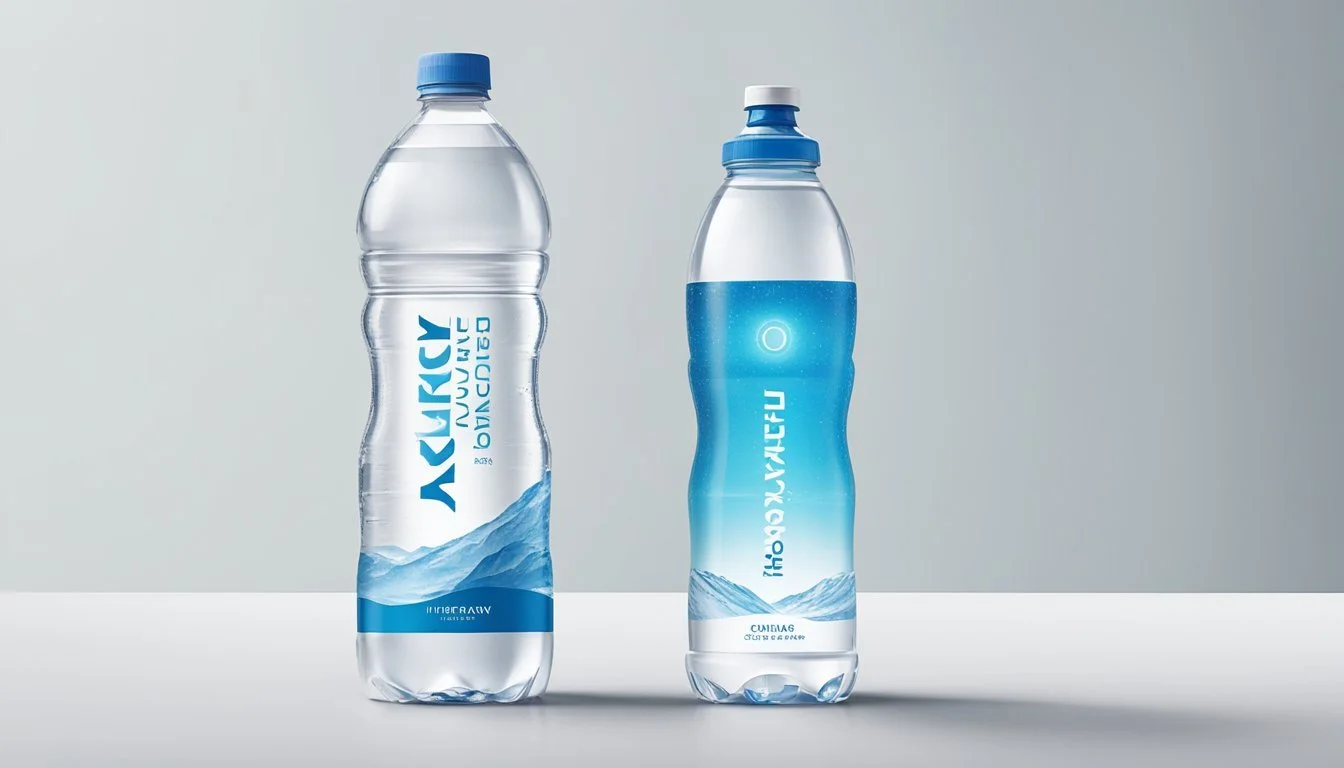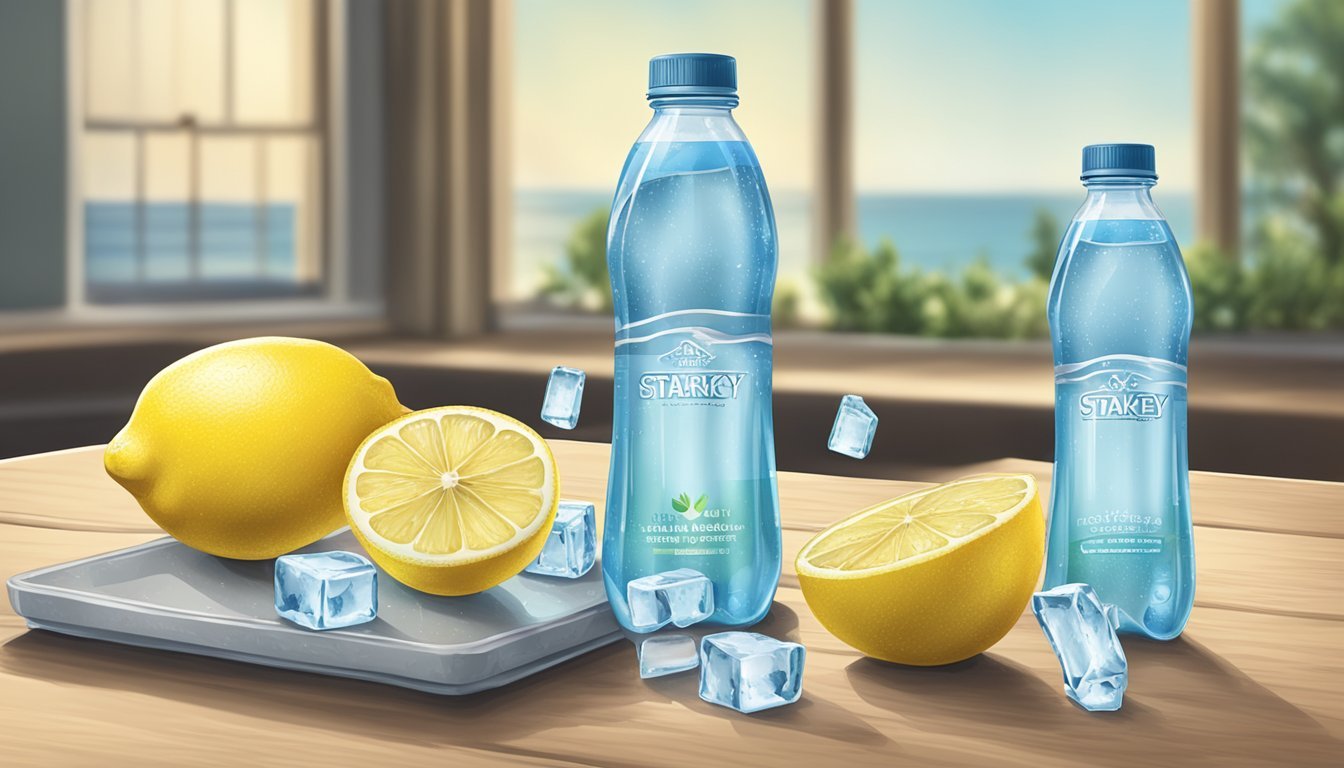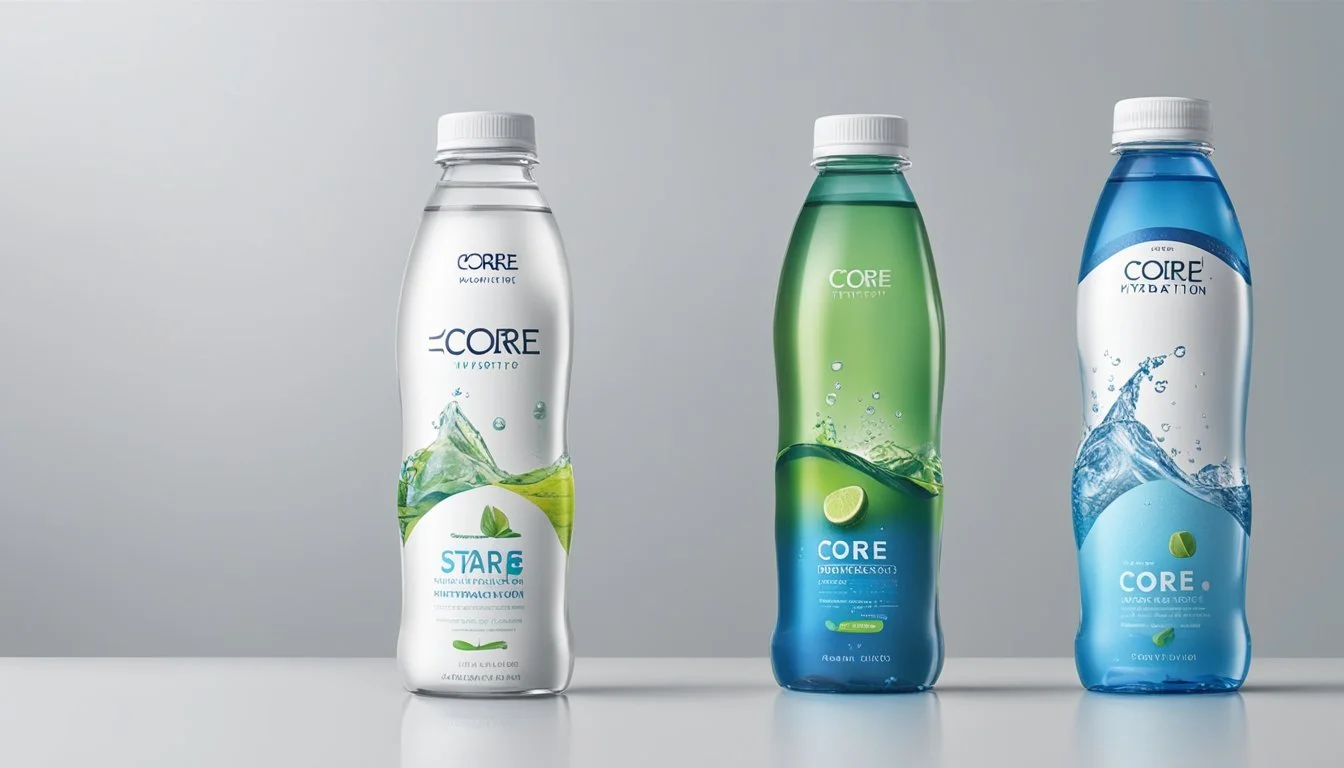Core Hydration vs. Starkey
Which Bottled Water is Better?
Water is essential for life, and choosing the right bottled water can make a difference in taste and health benefits. Core Hydration and Starkey are two prominent brands competing for consumer preference. Core Hydration markets itself as a premium water brand, boasting ultra-purification and a pH level to match the human body's natural state. It also includes electrolytes and minerals, which some consumers find enhances the water's taste.
Starkey Water, sourced from a geothermal spring, offers a different appeal. With its naturally occurring minerals and trace elements, Starkey claims to provide not just hydration but also potential health benefits. Many users appreciate its clean and crisp taste, a testament to its natural origins.
For those seeking a balance of high purification and added minerals, Core Hydration might be the better choice, especially for active individuals needing electrolyte replenishment. On the other hand, Starkey's natural mineral content and unique geothermal sourcing offer a distinct alternative for those favoring less processed water. Each brand presents distinct advantages, catering to different preferences and hydration needs.
Understanding Hydration and Bottled Water
Hydration plays a pivotal role in maintaining health, and choosing the right bottled water can make a difference in daily hydration habits. With various brands offering diverse features, understanding the benefits and factors influencing these choices can guide consumers effectively.
The Importance of Hydration for Health
Hydration is essential for overall body function. It aids in digestion, nutrient transport, and temperature regulation. Without adequate water intake, individuals may experience fatigue, headaches, and decreased cognitive performance.
The body relies on water to perform crucial tasks. Ensuring proper hydration supports joint lubrication and skin health. Daily water needs can vary based on activity levels, climate, and individual health conditions. Hydration is fundamental to maintaining an active lifestyle and preventing dehydration-related illnesses.
Bottled Water in the Market
Bottled water is a convenient option for many. The market offers a wide range of products, from purified to mineral-enriched waters. Brands like Core Hydration and Starkey emphasize specific unique features like pH balance and electrolyte content.
Core Hydration markets itself with a balanced pH aligning to the body’s natural state and a blend of electrolytes. Meanwhile, other brands might focus on the purity and origin of the water, impacting the taste and mineral content. Prices can vary, with some premium options costing significantly more.
Factors Affecting Water Choices
Several factors influence the choice of bottled water. These include taste, mineral content, packaging, and environmental concerns. For instance, core hydration highlights its 100% recyclable, BPA-free plastic bottles. Some consumers prioritize the health benefits, such as the presence of electrolytes in their bottled water.
Cost is another significant factor. While premium brands offer additional features, they come at a higher price. Consumers may balance cost with preferences for health benefits and environmental impact. Understanding these factors can help in making informed decisions about hydration and health.
Core Hydration: Brand Overview
Core Hydration stands out in the bottled water market with its specialized filtration process and unique bottle design. It emphasizes purity and electrolyte balance, aiming to provide optimal hydration without unnecessary additives.
Core Water: Special Features
Core Water features a seven-stage purification process. This process includes reverse osmosis, which removes impurities, and the addition of electrolytes such as potassium bicarbonate, magnesium chloride, and calcium chloride. These electrolytes help to maintain a balanced pH level of 7.4, which aligns with the body's natural pH.
The water is marketed as being ultra-purified and free from contaminants. Unlike many other brands, Core Hydration avoids artificial flavors and colors, making it a clean option for health-conscious consumers. This is crucial for maintaining the drink's light taste and smooth finish.
Branding and Market Presence
Core Hydration's branding focuses on its sleek bottle design and upscale image. The bottle is ergonomically designed with a curved shape, making it easy to hold. The blue and white color scheme with transparent sections gives it a modern and premium look.
The brand has effectively positioned itself in the higher end of the bottled water market. Core Water is often marketed alongside fitness and wellness products, and it is commonly found in health food stores, gyms, and upscale retail locations. This strategic placement helps to attract a health-conscious audience looking for premium hydration solutions.
In summary, Core Hydration combines advanced purification technology with smart branding to appeal to a discerning consumer base. Its focus on purity and balanced electrolytes sets it apart in the crowded bottled water market.
Starkey Water: Brand Analysis
Starkey Water holds a unique position in the bottled water market primarily due to its point of origin and the controversial findings regarding its arsenic levels. Understanding Starkey’s unique properties and comparing it to other leading brands like Evian and Aquafina can give consumers better insight into its distinctiveness and safety.
Starkey Water: Origin and Distinctiveness
Starkey Water is sourced from a spring located deep underground, drawing from geothermal wells that are over 2 miles beneath the Earth's surface. This unique origin gives Starkey its mineral-rich profile, with a slight alkaline pH balance that some consumers find appealing.
Despite its unique sourcing, Starkey has faced scrutiny for its arsenic content. Testing has revealed levels as high as 9.8 parts per billion (ppb), just below the federal standard of 10 ppb. This raises concerns about the long-term health implications of regularly consuming Starkey Water. Nonetheless, it maintains a niche following for its distinct taste and natural mineral content, distinguishing it from more processed brands like Aquafina.
Comparison to Other Brands
Compared to other premium brands, Starkey Water sits at a crossroads of natural purity and safety concerns. For example, Icelandic Glacial and Evian are celebrated for their pristine sources and minimal contaminants, often scoring low in contaminant tests. Icelandic Glacial is sourced from the Olfus Spring in Iceland, offering naturally low TDS (total dissolved solids) levels, whereas Evian hails from the French Alps and is renowned for its smooth, silky texture.
On the other hand, Aquafina undergoes a rigorous purification process, including reverse osmosis, making it one of the cleanest options available but lacking the natural mineral taste found in Starkey. Brand reputation also plays a crucial role, with Evian and Icelandic Glacial often cited for their high-quality standards and clean water, whereas Starkey's reputation is marred by the arsenic controversy.
In essence, consumers seeking a natural, mineral-rich option might still consider Starkey, but those prioritizing absolute purity and safety might lean towards brands like Aquafina, Icelandic Glacial, or Evian.
Comparative Studies: Core Hydration vs. Starkey
Core Hydration and Starkey offer distinct characteristics in terms of pH levels, mineral content, and health benefits. Understanding these aspects can help you decide which bottled water may be the better choice for your needs.
pH and Mineral Content
Core Hydration boasts a pH level of 7.4, closely matching the body's natural pH. It includes minerals like calcium, magnesium, and potassium. These contribute to its slightly alkaline profile.
Starkey, sourced from geothermal springs, also has notable mineral content. The pH of Starkey water is typically around 9.6, making it more alkaline compared to Core.
Starkey's higher pH may appeal to those seeking more alkaline water. Minerals in Starkey include calcium and magnesium, contributing to its distinct taste and potential health benefits.
Health Benefits and Considerations
Core Hydration focuses on balanced pH and electrolyte content. The minerals in Core—calcium, magnesium, and potassium—are essential for hydration and cellular functions. Its ingredient list does not include any artificial additives.
Starkey's high pH and mineral content may offer additional benefits. Consuming alkaline water like Starkey may help balance body acidity. However, its higher mineral content might not be suitable for everyone, particularly those with specific health concerns.
Both waters aim to provide hydration with added minerals, but the choice depends on individual preferences and health considerations.
Water Quality and Safety
Both Core Hydration and Starkey emphasize high standards for water quality and safety. Here's an in-depth look at their processes, the presence of any constituents and contaminants, and their certifications.
Filtration and Purification Processes
Core Hydration utilizes a multi-step process involving reverse osmosis and carbon filtration, aimed at removing impurities and maintaining optimal purity. This highly controlled method ensures the water is both clean and balanced to a perfect pH of 7.4.
Starkey, sourced from a geothermal spring in Idaho, employs a meticulous filtration process. Their water undergoes minimal treatment to preserve its natural mineral content. However, their processes are designed to ensure safety from common contaminants through advanced filtration and purification.
Constituents and Contaminants
Core Hydration provides water that has been stripped of contaminants like lead and heavy metals through rigorous filtration. Their consistent quality control checks ensure the absence of harmful substances, making it a reliable choice.
Starkey’s water contains naturally occurring minerals, which adds a unique taste profile. Nonetheless, it has faced scrutiny for the presence of arsenic slightly above the recommended limits in past Consumer Reports. Starkey maintains that their water meets Federal standards, yet this point of concern can influence consumer perception.
Certifications and Standards
Core Hydration holds various certifications that align with industry standards. Their water is certified by the NSF for quality assurance, ensuring that it adheres to strict safety and purity criteria. They also frequently publish detailed water quality reports for transparency.
Starkey boasts an IBWA (International Bottled Water Association) certification, which guarantees their practices comply with stringent safety regulations. They adhere to FDA requirements, ensuring their water meets necessary health and safety standards. While special attention is given to natural mineral content, Starkey continually reassures consumers of their commitment to safety.
Environmental and Social Responsibility
Core Hydration and Starkey both emphasize their commitments to sustainability and providing clean drinking water. This involves initiatives around their bottle materials, recycling efforts, and contributions to global water access.
Bottle Materials and Sustainability
Core Hydration uses 100% recyclable plastic bottles that are also BPA-free. Their bottles are designed for comfort and ergonomics, making them convenient for users while still being sustainable. This focus on using recyclable materials helps reduce environmental impact.
Starkey, on the other hand, leverages glass bottles which can be reused and are also recyclable. Glass is considered a more environmentally friendly option because it’s not made from petroleum products, reducing dependency on fossil fuels. This choice appeals to eco-conscious consumers looking for sustainable packaging options.
Commitment to Clean Drinking Water
Core Hydration is involved in multiple initiatives aimed at providing clean drinking water to communities in need. They partner with non-profit organizations to ensure safe water access in underprivileged areas. Their efforts extend to funding projects and spreading awareness about the importance of clean water.
Starkey also prioritizes clean drinking water philanthropy. They have established programs specifically targeted at water purification projects in remote and impoverished regions. Starkey’s long-term goal is not only to deliver clean water but also to educate communities on sustainable water practices, thereby fostering independence and long-term health improvements.
Consumer Experience and Accessibility
Core Hydration and Starkey both address consumer accessibility through thoughtful packaging and wide distribution networks. Each brand has distinct approaches and advantages in these areas.
Packaging and Convenience
Core Hydration features bottles with an ergonomic design for a comfortable grip. The bottles are also BPA-free and 100% recyclable, appealing to health-conscious users. The inclusion of electrolytes in Core Hydration's formula enhances the taste, making it a preferred choice for many.
Starkey offers a simpler packaging approach. Though Starkey's bottles are also recyclable, they lack the ergonomic enhancements seen in Core's design. Nevertheless, the mineral-rich taste of Starkey water attracts those seeking a naturally sourced option.
Design Comparison:
Core Hydration: Ergonomic, BPA-free, 100% recyclable
Starkey: Standard design, recyclable
Taste Additives:
Core Hydration: Electrolytes for taste
Starkey: Natural mineral content
Availability and Distribution
Core Hydration benefits from a robust distribution network. Available in major retailers like Whole Foods and large supermarket chains, it ensures easy access for consumers. Core Hydration is also part of a portfolio managed by Coca-Cola, enhancing its market reach.
Starkey, produced by Whole Foods' parent company, enjoys prominent placement in Whole Foods stores. While this ensures high visibility among Whole Foods shoppers, its presence in other retail environments is more limited compared to Core Hydration.
Retail Presence:
Core Hydration: Widely available in supermarkets, including Whole Foods
Starkey: Predominantly available in Whole Foods
Market Reach:
Core Hydration: Enhanced by Coca-Cola's distribution network
Starkey: More niche, focused on Whole Foods
Accessibility determines convenience for consumers, and both Core Hydration and Starkey offer unique strengths in this regard.
Concluding Insights
When comparing Core Hydration and Starkey, several factors are key.
Core Hydration emphasizes its balanced pH, which is close to the body's natural level of about 7.4. This makes it a popular choice for those looking for water that claims to harmonize with the body's natural state. Additionally, its inclusion of electrolytes is marketed as a benefit for taste and hydration.
Starkey Water, in contrast, is known for its high mineral content, coming from geothermal sources. It has a unique taste that stands out from other bottled waters. The high mineral content may appeal to consumers looking for a distinct and slightly salty flavor profile.
Packaging also differs significantly. Core Hydration uses 100% recyclable plastic bottles that are BPA-free and ergonomically designed for easy grip. Starkey uses glass bottles, which may be preferred for their environmental impact and perceived purity.
Here’s a quick comparison:
Feature Core Hydration Starkey pH Level ~7.4 (Natural) High (varies) Mineral Content Added electrolytes Geothermal minerals Packaging Recyclable plastic, BPA-free Glass Taste Profile Neutral Distinct, salty
Consumers might choose Core Hydration for its balanced pH and ergonomic bottle design, suitable for those leading an active lifestyle. Starkey, with its unique mineral content and glass packaging, appeals to those seeking a natural and high mineral content beverage.
Both brands offer unique advantages, catering to varying preferences and health considerations.
More About Core Hydration
Acqua Panna vs Core Hydration: Which Bottled Water is Better?
Boxed Water vs Core Hydration: Which Bottled Water is Better?
Core Hydration vs Alkaline88: Which Bottled Water is Better?
Core Hydration vs Aqua Carpatica: Which Bottled Water is Better?
Core Hydration vs Cascade Mountain: Which Bottled Water is Better?
Core Hydration vs Castle Rock: Which Bottled Water is Better?
Core Hydration vs CBD Living: Which Bottled Water is Better?
Core Hydration vs Crystal Geyser: Which Bottled Water is Better?
Core Hydration vs Crystal Lake: Which Bottled Water is Better?
Core Hydration vs Essence pH10: Which Bottled Water is Better?
Core Hydration vs Hawaii Volcanic: Which Bottled Water is Better?
Core Hydration vs Hawaiian Springs: Which Bottled Water is Better?
Core Hydration vs Ice Mountain: Which Bottled Water is Better?
Core Hydration vs Icelandic Glacial: Which Bottled Water is Better?
Core Hydration vs Just Water: Which Bottled Water is Better?
Core Hydration vs Kirkland Signature: Which Bottled Water is Better?
Core Hydration vs Liquid Death: Which Bottled Water is Better?
Core Hydration vs Mountain Valley Spring Water: Which Bottled Water is Better?
Core Hydration vs Nestle Pure Life: Which Bottled Water is Better?
Core Hydration vs Open Water: Which Bottled Water is Better?
Core Hydration vs Poland Spring: Which Bottled Water is Better?
Core Hydration vs Proud Source: Which Bottled Water is Better?
Core Hydration vs Purely Sedona: Which Bottled Water is Better?
Core Hydration vs Richard's Rainwater: Which Bottled Water is Better?
Core Hydration vs San Pellegrino: Which Bottled Water is Better?
Core Hydration vs Simple Truth: Which Bottled Water is Better?
Core Hydration vs Smartwater: Which Bottled Water is Better?
Core Hydration vs Solan de Cabras: Which Bottled Water is Better?
Core Hydration vs Talking Rain AQA: Which Bottled Water is Better?
Core Hydration vs Topo Chico: Which Bottled Water is Better?
Core Hydration vs Weird Water: Which Bottled Water is Better?
Core Hydration vs Whole Foods 365: Which Bottled Water is Better?
Core Hydration vs Whole Foods Italian Still Mineral water: Which Bottled Water is Better?
Core Hydration vs Zephyrhills: Which Bottled Water is Better?
More About Starkey
Icelandic Glacial vs Starkey: Which Bottled Water is Better?
Mountain Valley Spring Water vs Starkey: Which Bottled Water is Better?
Starkey vs Kirkland Signature: Which Bottled Water is Better?
Starkey vs Richard's Rainwater: Which Bottled Water is Better?
Starkey vs Whole Foods Italian Still Mineral water: Which Bottled Water is Better?






